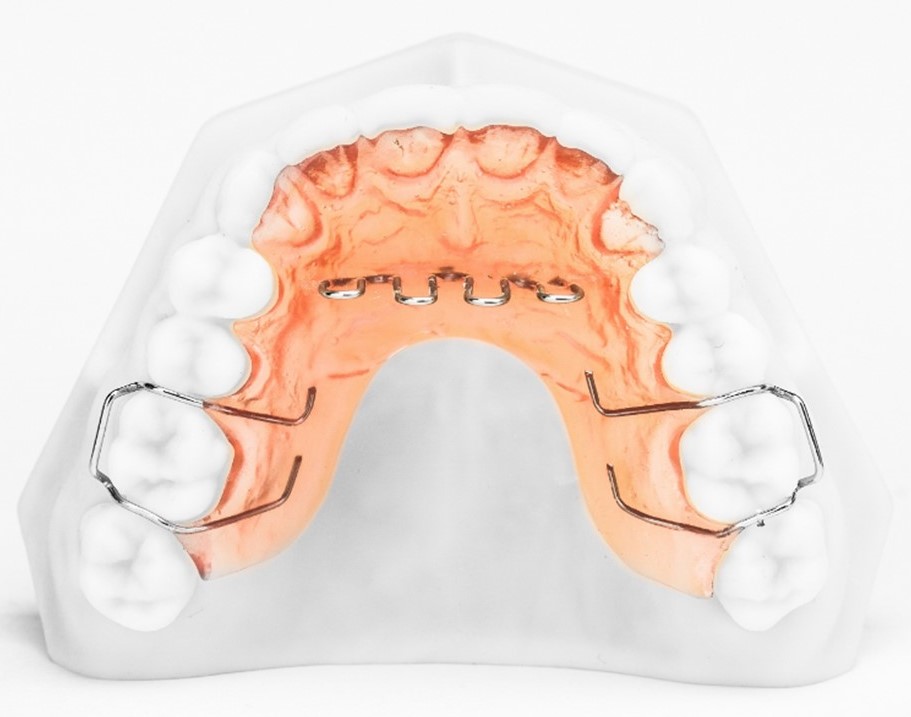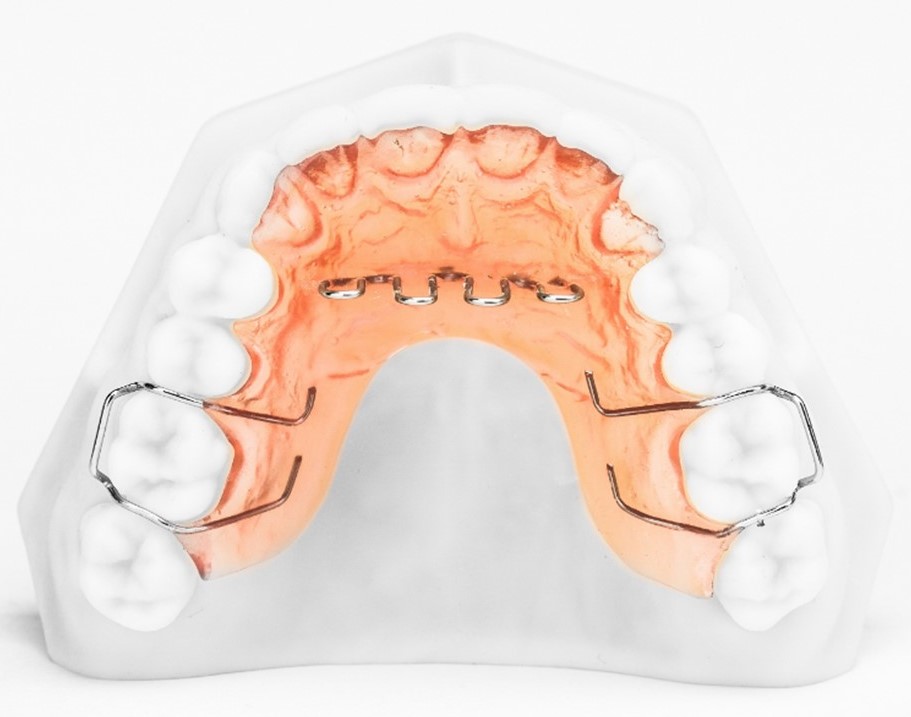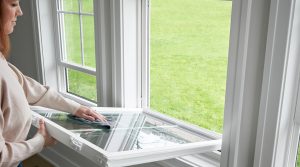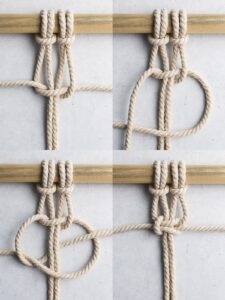Contents
- What is a Tongue Crib Appliance?
- Types of Tongue Crib Appliances
- How Does a Tongue Crib Appliance Work?
- Conditions that Require the Use of a Tongue Crib Appliance
- Benefits of Using a Tongue Crib Appliance
- Procedure for Using a Tongue Crib Appliance
- Tips for Effectively Using a Tongue Crib Appliance
- Potential Risks and Side Effects
- Alternative Treatment Options
- Frequently Asked Questions
You have probably heard about orthodontic treatment and the various appliances used to correct dental issues, but have you ever wondered about the specific role of the tongue crib appliance? Imagine a device that helps address tongue thrusting and improper tongue posture, improving the overall effectiveness of orthodontic treatment. The use of a tongue crib appliance not only assists in straightening teeth but also promotes better oral habits and healthier dental development. In this article, we will explore the benefits and functionality of this innovative tool, giving you a deeper understanding of its role in achieving a beautiful and healthy smile.
What is a Tongue Crib Appliance?
A tongue crib appliance, also known as a tongue crib or a tongue crib device, is a dental appliance that is used to address various oral and orthodontic issues. It is designed to restrain the movement of the tongue and encourage proper tongue positioning within the oral cavity. This device is typically made of acrylic and can be either fixed or removable, depending on the specific needs of the patient.
Definition
A tongue crib appliance is a dental device that is used to help correct issues related to tongue positioning and movement. It consists of a metal framework or acrylic structure that is placed on the upper teeth, with the purpose of preventing the tongue from pushing against the teeth and interfering with proper oral function.
Purpose
The primary purpose of a tongue crib appliance is to address specific oral and orthodontic issues that may arise due to improper tongue positioning or movement. By restraining the tongue and promoting correct tongue posture, this device helps prevent tongue thrusting, improves speech, promotes proper swallowing, and can assist in orthodontic treatment by preventing the unwanted movement of teeth or a relapse after orthodontic treatment.
Types of Tongue Crib Appliances
There are two main types of tongue crib appliances: fixed and removable. The choice between the two depends on the severity of the situation, the patient’s age, and the recommendation of the orthodontist or dentist.
Fixed Tongue Crib Appliance
A fixed tongue crib appliance is permanently affixed to the teeth and cannot be removed by the patient. It is typically bonded to the upper molars and premolars using dental adhesives. This type of appliance is recommended for more severe cases or when long-term tongue positioning correction is needed.
Removable Tongue Crib Appliance
A removable tongue crib appliance, as the name suggests, can be taken out by the patient. It is custom-made to fit the patient’s mouth and is usually attached to the teeth using clasps or a retainer-like mechanism. A removable tongue crib appliance is often recommended for less severe cases or when periodic removal is necessary for proper oral hygiene or specific activities.
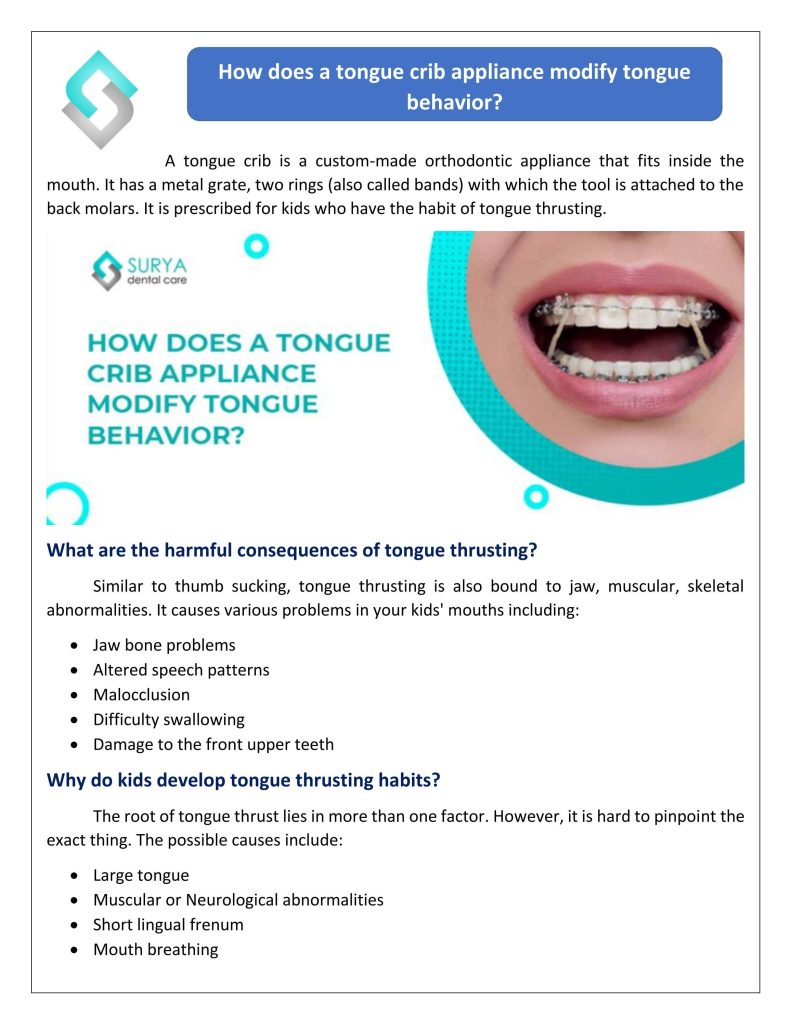
How Does a Tongue Crib Appliance Work?
Understanding how a tongue crib appliance works can help shed light on its effects and benefits. Let’s explore the different aspects of its functioning.
Mechanism
A tongue crib appliance works by physically preventing the tongue from pushing against the teeth or other oral structures. By creating a barrier with the appliance, the tongue is trained to rest in the correct position, which is against the palate, behind the upper front teeth. This helps in retraining the tongue’s natural posture and reducing the forces exerted on the teeth.
Effects on the Tongue
Using a tongue crib appliance helps break unwanted habits, such as tongue thrusting. Over time, the tongue learns to position itself correctly without pushing against the teeth, leading to improved oral function and better tongue posture. The appliance acts as a reminder for the tongue, encouraging it to stay in the desired position and reducing the likelihood of relapse.
Effects on the Oral Cavity
By promoting proper tongue posture and preventing undue pressure on the teeth, a tongue crib appliance can contribute to a healthier oral cavity. It helps prevent the development of a gap between the front teeth, reduces the risk of tongue tie complications, and aids in improving the overall alignment and function of the teeth.
Effects on Orthodontic Treatment
For individuals undergoing orthodontic treatment, the use of a tongue crib appliance can have significant benefits. It assists in preventing unwanted tooth movement or relapse after treatment, ensuring that the teeth retain their newly aligned position. It can also minimize the impact of tongue thrusting on orthodontic appliances, such as braces or aligners, increasing the effectiveness and efficiency of the treatment process.
Conditions that Require the Use of a Tongue Crib Appliance
Several oral and orthodontic conditions can benefit from the use of a tongue crib appliance. Let’s explore some of the common situations where this device may be recommended.
Tongue Thrusting
Tongue thrusting refers to the habit of pushing the tongue against the front teeth during swallowing, speaking, or resting. This habit exerting pressure on the teeth can lead to misalignment, an open bite, or other orthodontic issues. A tongue crib appliance can effectively address this condition by preventing the tongue from thrusting forward, breaking the habit, and promoting normal tongue posture.
Tongue Tie
Tongue tie, also known as ankyloglossia, is a condition where the tongue’s range of motion is restricted due to an unusually short or thick frenulum (the tissue that connects the tongue to the floor of the mouth). Tongue crib appliances can help alleviate the complications caused by tongue tie by repositioning and training the tongue to achieve better functionality and reduce strain on the frenulum.
Gap between Front Teeth
A gap between the front teeth, known as a diastema, can be caused by various factors, including improper tongue posture. A tongue crib appliance can help address this condition by guiding the tongue to rest against the palate, preventing excessive pressure on the front teeth, and promoting proper alignment.
Maxillary Protrusion
Maxillary protrusion refers to an abnormal forward position of the upper jaw and teeth relative to the lower jaw. Tongue crib appliances can assist in correcting this condition by encouraging proper tongue posture and alleviating the forces that may contribute to the protrusion. By repositioning the tongue and promoting better oral function, a tongue crib appliance can contribute to a more balanced and harmonious facial profile.
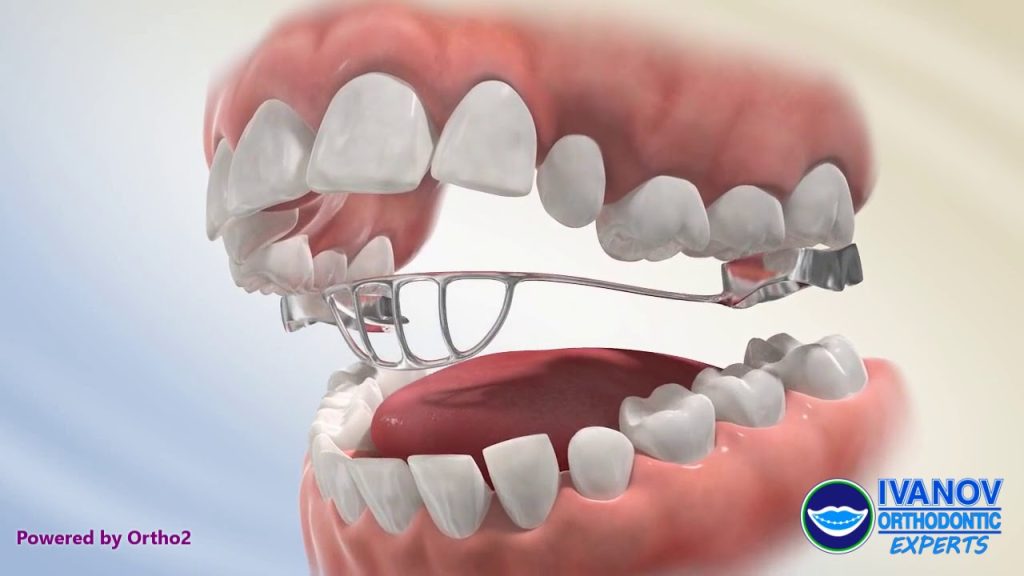
Benefits of Using a Tongue Crib Appliance
Using a tongue crib appliance can provide several benefits. Let’s explore some of the advantages of incorporating this device into your oral or orthodontic treatment plan.
Preventing Tongue Thrusting
One of the primary benefits of a tongue crib appliance is its ability to prevent and break the habit of tongue thrusting. By creating a physical barrier and promoting correct tongue posture, the appliance helps retrain the tongue to rest in the appropriate position, reducing the forces exerted on the teeth and aiding in preventing relapse.
Promoting Normal Tongue Positioning
A tongue crib appliance acts as a guide for promoting proper tongue positioning inside the oral cavity. By encouraging the tongue to rest against the palate, behind the upper front teeth, the appliance helps reposition the tongue and maintain a natural resting posture. This can lead to improved overall oral function and alignement.
Improving Speech
Proper tongue position plays a crucial role in speech production. By restraining the tongue and encouraging correct tongue posture, a tongue crib appliance can help improve speech clarity, articulation, and pronunciation. It assists in minimizing speech impairments that may be caused by tongue thrusting or other adverse tongue habits.
Enhancing Orthodontic Treatment
For individuals undergoing orthodontic treatment, the use of a tongue crib appliance can be highly beneficial. It serves as an additional aid in preventing unwanted tooth movement, ensuring that the teeth maintain their corrected position. By reducing the impact of tongue thrusting on orthodontic appliances, such as braces or aligners, it can help optimize treatment outcomes and potentially shorten the duration of treatment.
Procedure for Using a Tongue Crib Appliance
The process of using a tongue crib appliance involves several steps. Let’s explore the typical procedure involved in incorporating this device into your orthodontic or oral treatment plan.
Consultation and Examination
The first step in using a tongue crib appliance is a consultation with an orthodontist or a dentist who specializes in orthodontics. During this visit, your oral health and specific conditions will be evaluated. The professional will assess whether a tongue crib appliance is suitable for your situation and discuss the potential benefits and expected outcomes.
Customization of the Appliance
Once it has been determined that a tongue crib appliance is appropriate for your needs, the next step involves the customization of the device. Your orthodontist or dentist will take impressions or digital scans of your teeth to create a precise mold of your mouth. This mold will serve as the basis for fabricating a custom-made tongue crib appliance that fits comfortably and securely in your mouth.
Placement and Adjustment
Once the tongue crib appliance is ready, you will have another appointment for its placement. If it is a fixed appliance, it will be bonded to the upper molars and premolars using dental adhesives. If it is a removable appliance, it will be fitted and attached to your teeth using clasps or a retainer-like mechanism. During this appointment, your orthodontist or dentist will ensure that the appliance fits properly and make any necessary adjustments for optimal comfort.
Follow-up Care
After the placement of the tongue crib appliance, regular follow-up appointments will be scheduled to monitor the progress and make any additional adjustments if needed. It is important to attend these follow-up visits and communicate any concerns or issues you may encounter while using the appliance. Your orthodontist or dentist will also provide instructions on how to maintain good oral hygiene and care for the appliance.
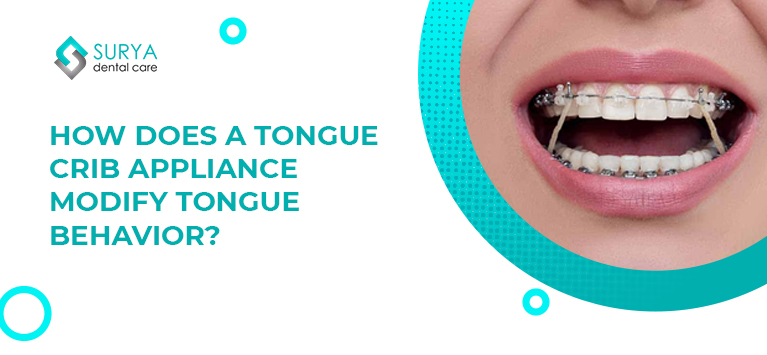
Tips for Effectively Using a Tongue Crib Appliance
To ensure the effectiveness of a tongue crib appliance, it is important to follow proper usage guidelines and maintain good oral hygiene. Here are some tips to help you maximize the benefits of using a tongue crib appliance:
Maintaining Good Oral Hygiene
To keep your tongue crib appliance clean and free from bacteria, it is essential to maintain good oral hygiene. Brush your teeth at least twice a day, paying special attention to the areas around the appliance. Regularly clean the appliance using a soft toothbrush, mild soap, or a non-alcoholic mouthwash as recommended by your orthodontist or dentist.
Avoiding Damages to the Appliance
To prolong the lifespan of your tongue crib appliance and ensure its proper functioning, it is important to avoid activities that may damage it. Refrain from chewing on hard or sticky foods, biting hard objects, or playing with the appliance using your tongue or fingers. Be careful when eating to prevent dislodgement or breakage of the appliance.
Practicing Appropriate Tongue Positioning
Using a tongue crib appliance is most effective when combined with conscious efforts to maintain proper tongue positioning. Train yourself to rest your tongue against the palate, behind the upper front teeth, even when the appliance is not in place. Be mindful of your tongue posture during swallowing, speaking, and resting to reinforce the correct positioning and enhance the device’s effectiveness.
Potential Risks and Side Effects
While the use of a tongue crib appliance is generally safe and beneficial, there are some potential risks and side effects to be aware of. It is important to discuss these with your orthodontist or dentist before using the device. Some possible risks and side effects include:
Discomfort and Soreness
It is common to experience some initial discomfort or soreness when using a tongue crib appliance. This is usually temporary and will fade as your mouth adjusts to the appliance. If the discomfort persists or becomes severe, consult your orthodontist or dentist for assessment and possible adjustments.
Speech Impairment
Initially, you might experience some difficulty speaking clearly or articulating certain sounds while wearing a tongue crib appliance. This is a normal adaptation phase, and with practice and time, your speech should improve. If speech impairment persists or significantly impacts your daily life, seek guidance from your orthodontist or dentist.
Temporarily Altered Taste
Some individuals may notice a temporary alteration in their sense of taste when using a tongue crib appliance. This is usually due to the presence of the device in the mouth, and the taste sensation should return to normal once the appliance is removed or as you adapt to its presence. If the altered taste persists or causes significant discomfort, consult your orthodontist or dentist.
Other Possible Complications
While rare, there is a slight risk of complications associated with the use of a tongue crib appliance. These may include damage to the teeth, gums, or oral tissues, as well as allergies or sensitivities to the materials used in the appliance. It is important to maintain regular communication with your orthodontist or dentist and promptly report any concerns or issues that arise.
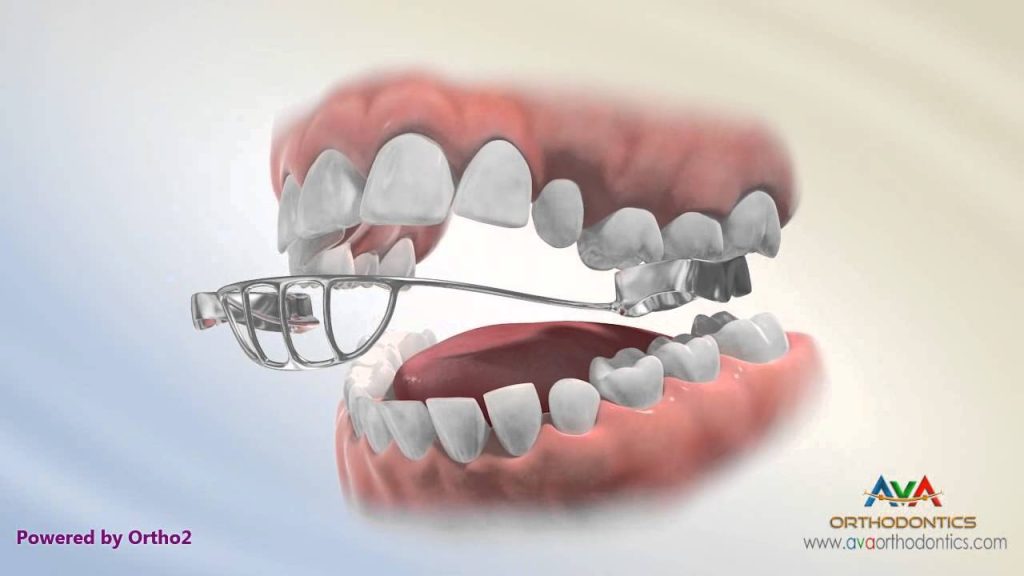
Alternative Treatment Options
In some cases, alternative treatment options may be considered instead of or in addition to using a tongue crib appliance. The appropriate treatment plan will depend on the specific condition and goals of the individual. Here are some alternative options that may be explored:
Myofunctional Therapy
Myofunctional therapy involves exercises and techniques to improve the function and coordination of the muscles involved in swallowing, breathing, and tongue posture. This therapy aims to retrain the muscles and promote proper oral function. It can be used in conjunction with a tongue crib appliance to enhance the effectiveness of treatment.
Orthognathic Surgery
Orthognathic surgery may be recommended for individuals with severe jaw discrepancies or skeletal abnormalities that contribute to their oral condition. This surgical intervention is aimed at correcting the structural issues and improving overall facial balance and function. In some cases, orthognathic surgery can help eliminate the need for a tongue crib appliance.
Speech Therapy
Speech therapy can be beneficial for individuals with speech difficulties related to tongue positioning or other oral muscle issues. A speech therapist can work with the individual to improve speech clarity, articulation, and overall oral communication skills. Speech therapy may be recommended in conjunction with or as an alternative to a tongue crib appliance, depending on the specific condition.
Orthodontic Treatment without a Tongue Crib Appliance
In certain situations, orthodontic treatment alone may be sufficient to address the underlying issues without the need for a tongue crib appliance. Orthodontic appliances like braces or aligners can help reposition the teeth and jaws, correcting misalignments and optimizing oral function. Your orthodontist will determine the most appropriate treatment plan for your specific situation.
Frequently Asked Questions
Having answered many questions related to the topic, let’s address some commonly asked questions surrounding the use of a tongue crib appliance.
How long is the treatment with a tongue crib appliance?
The duration of treatment with a tongue crib appliance varies depending on the specific condition being addressed and the individual’s response to treatment. Generally, treatment can range from several months to a few years. Your orthodontist or dentist will provide you with a more accurate estimate based on your unique situation and treatment goals.
Can adults use a tongue crib appliance?
Yes, adults can use a tongue crib appliance if deemed suitable by their orthodontist or dentist. The effectiveness of the appliance may differ compared to its use in children or adolescents due to the maturity of the oral structures. However, for adults who have specific oral or orthodontic issues related to their tongue posture, a tongue crib appliance can still be a viable treatment option to consider.
Will a tongue crib appliance affect eating and swallowing?
Initially, you may experience some adjustments while eating and swallowing with a tongue crib appliance. It may take a short period of time for your mouth to adapt to the device. However, with practice and proper guidance, you should be able to eat and swallow comfortably while wearing the appliance. If you encounter persistent difficulties or discomfort, consult your orthodontist or dentist.
Can a tongue crib appliance cause teeth misalignment?
When used properly and under the guidance of a dental professional, a tongue crib appliance should not cause teeth misalignment. On the contrary, it is primarily used to prevent misalignment caused by tongue thrusting or other harmful oral habits. However, inadequate usage or failure to follow instructions may result in unwanted forces on the teeth, which could potentially lead to misalignment. Therefore, proper compliance and regular follow-up care are essential to ensure the desired outcome.
Is a tongue crib appliance covered by insurance?
The coverage for a tongue crib appliance may vary depending on the insurance policy and the specific insurance provider. Some insurance plans may cover a portion or all of the cost, while others may not include it in their coverage. It is advisable to contact your insurance provider and discuss the treatment with your orthodontist or dentist to determine the extent of coverage and the potential out-of-pocket expenses.
In conclusion, a tongue crib appliance is a valuable tool in addressing various oral and orthodontic issues. Whether fixed or removable, its purpose is to promote proper tongue positioning, prevent tongue thrusting, improve speech, and enhance orthodontic treatment. By understanding its mechanism, potential benefits, and alternative treatment options, you can make informed decisions about incorporating a tongue crib appliance into your oral health journey. Remember to consult with your orthodontist or dentist to assess your specific needs and determine the best course of treatment for you.
